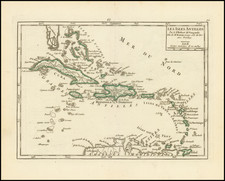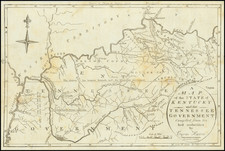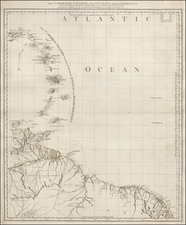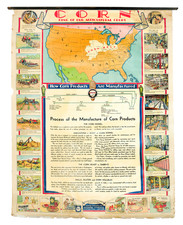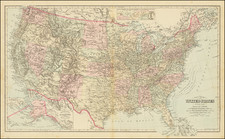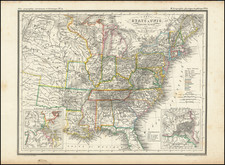New Orleans-Published, Spanish-Language Map Illustrating the Centrality of New Orleans to American Commerce -- Made by Julio Popper, a Romanian-Argentine-Jewish Explorer and Entrepreneur and a Participant in the Selk'nam Genocide.
Large color-lithographed folding map showing much of the United States (west to Idaho, Utah, and Arizona), the Caribbean, and Central America. The map highlights rail and sea transportation routes, including real and projected routes. The map also notes distance of the journey in nautical miles and the time to complete.
The map was issued to promote the activities of the Mexican, Central American & South American Commercial Exchange, which, in its 1884 Report explained the importance of New Orleans to intra-American commerce:
No city in the United States has a deeper interest in the subject of trade with Mexico, Central and South America than New Orleans.
The geographical position, combining as it does the advantages of unrivaled interior connections, both by railroad and river, and the facilities of one of the best deep water maritime ports on the continent, indicates this city as such a natural point for handling the incoming and outgoing freights of the vast Mississippi Valley. She is already the second port in the United States for exports, or, combining imports and exports, the third in rank. The expansion of J er commerce with Spanish America will benefit, not herself alone, but every State in the great basin drained by the Mississippi and its tributaries. In natural position New Orleans bears the same relation to St. Louis, Cincinnati, Louisville, Chicago and other great cities of the valley as Liverpool to Manchester, Birmingham and other manufacturing cities of England, and her commerce should have the same relative proportion to that of Rew York that Liverpool bears to London. The merchandise required for export consists principally of the products of the fields, forests and manufactories of those districts directly in communication with New Orleans by rail and river, while the rapid expansion of Southern Industries is continually increasing the supplies of such articles from the territory more immediately contiguous to her port.
Julius Popper
Julius, or Julio, Popper (December 15, 1857 - June 5, 1893) was a fascinating character in late-19th century American history. In 1857, Popper was born to a Jewish family in Bucharest, son of a prosperous professor and antiques dealer, Neftali Popper, and his wife Peppi. Popper gained engineering credentials in Paris before heading to the Americas. He was evidently active in New Orleans, as evidenced by this map, but we have uncovered little else about him before he arrived in Argentina in 1885.
After his arrival in Argentia, he became interested in prospecting Tierra del Fuego for gold. On 7 September 1886, he led an 18-man expedition that included a chief engineer, a mineralogist, a journalist, and a photographer. Popper succeeded in finding gold, however during his time in Tierra del Fuego he either personally murdered, or was responsible for the deaths of numerous local Selk'nam people. The locals suffered terribly with the onset of the Tierra del Fuego gold rush; they hunted sheep owned by newly established sheep farmers and gold miners and were, in turn, hunted themselves. Popper is recorded in photographs with Selk'nam that he killed.
Nonetheless, Popper was quite successful in his gold mining operation. He died an early and sudden death in Buenos Aires, at the age of 35. His cause of death has not been conclusively established, but a contemporary American journalist John R. Spears says that he was poisoned by "men whom he had offended in the south."
Popper is credited with designing the modern outline of the City of Havana, Cuba, although the veracity of this claim remains undetermined.
He also prepared an expedition to enforce the Argentine claim for parts of Antarctica.









